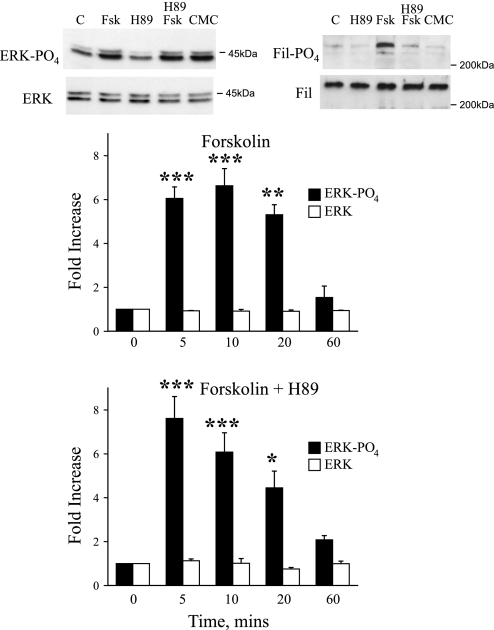Fig. 1.
Effect of forskolin (FSK; 10 μmol/l), in the absence (top bars) and presence (bottom bars) of the PKA inhibitor H89 (2 μmol/l), on ERK1/2 phosphorylation in human cultured cutaneous vascular smooth muscle cells (VSMCs). Cells were harvested 5, 10, 20, and 60 min after addition of FSK, and cell lysates were assessed for total and phosphorylated ERK using Western blot analysis. Top: representative blots demonstrating effects of FSK (10 μmol/l; in the presence and absence of H89 at 2 μmol/l) or 8-pCPT-2′-O-Me-cyclic AMP (CMC; 100 μmol/l) on levels of phospho-ERK1/2 or total ERK1/2 (left) and on levels of phospho-filamin (Fil) or total Fil (right) 10 min after administration of the agonists. When present, H89 was administered 30 min before and during exposure of the cells to FSK. FSK or CMC increased phosphorylation of ERK1/2 that was sustained for at least 20 min but had returned to basal levels by 60 min. H89 did not influence the response to FSK at any time point. The results are expressed as fold increase from time 0 and are presented as means ± SE for n = 4 different cell culture experiments. *Significantly different from control; *P < 0.05; **P < 0.01; ***P < 0.001. C, control.

